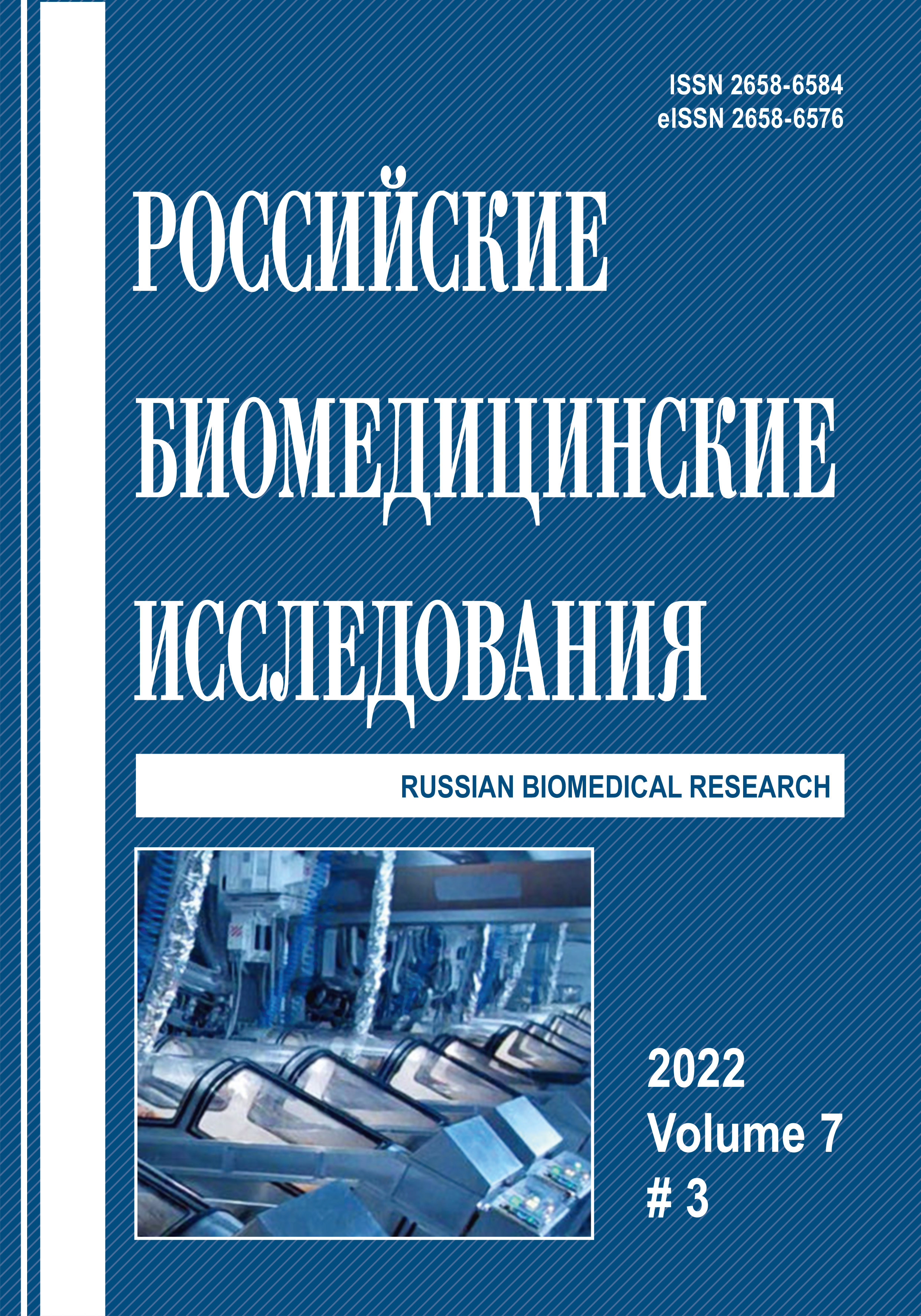CORRELATION OF BODY SHAPE AND FUNCTIONAL REACTIVITY OF AUTONOMIC NERVOUS SYSTEM TONE DURING BREATHING WITH ADDITIONAL RESISTANCE
Abstract
The purpose of this work was to analyze the of the statistical relationship between the values of anthropometric characteristics and the parameters of heart rate variability (HRV). Materials and methods. The work was attended by 196 young men aged 19 to 22 years. First, they were registered the main parameters of heart rate variability according to the pulsogram, with an assessment of the tone of the autonomic nervous system by the value of the Baevsky’s Stress Index (SI), which in all volunteers did not exceed 100 c.u., which indicated a high vagal tone. Anthropometric parameters were measured according to the program, including the overall dimensions of the body and limbs, body mass index, the width of large joints, the thickness of the skin - fat fold (SCF) and vital capacity of the lungs (VCL). Heart rate variability (HRV) was recorded during the simulation of additional breathing resistance by putting on a resistive mask. The Spearman’s ρ of anthropometric parameters and HRV were calculated, as well as their 95% confidence intervals. Results. High values of body and torso length in subjects weakly correlate with low values of “parasympathetic” (RMSSD, pNN50% and HF) and increased values of “sympathetic” HRV (SI and AMo) before and after additional respiratory resistance. In addition, a high degree of flattening of the chest, determined by the values of the anterior - posterior diameter of the chest, and a high thickness of the SCF are associated with reduced values of “parasympathetic” and increased values of “sympathetic” HRV. Other anthropometric parameters and HRV indicators did not have a statistically significant correlation. Conclusions. A tendency to brachymorphy, that is, a long body and relatively short legs, in combination with a greater VCL can serve as a marker of increased vagal tone, including during resistive breathing. The results obtained substantiate the need for increased attention to the health status of subjects with an appropriate body structure and excessive fat deposition, if necessary, breathing with additional aerodynamic resistance.



